Menswear is divided into two or three worlds. Streetwear is arguably the most populated despite some observers’ curious proclamations of its deadness. You have the sartorialists, who herald the bi-annual Pitti Uomo as the most noteworthy event for men’s fashion, where “proper” menswear business gets done. Then there’s the capital “F” fashion crowd, for whom an understanding of what is and is to come regarding clothes begins and ends with what industry folk refer to as “the circuit:” New York, London, Milan and Paris Fashion Weeks. It’s where designers put their best ideological foot forward. Or should.
Seeing men’s clothes go down the runway can be less exciting than women’s since they’re generally more conservative. But what’s enjoyable about this menswear season, is that it is a much smaller conversation, and so the shifts are easier to trace. Trimmings and hidden details are in fact defining elements of our clothes because the silhouettes hardly shift. And fortunately, as designers have grappled with notions of masculinity in recent years, things have changed.
The Paris Men’s Fashion Week shows tend to make this feel more real than ambitious. And it isn’t always through androgyny, either. Designers like Mike Amiri, for example, brought vanity to the fore in a collection that looks more worldly than Casablanca and less compromising than recent Tom Ford. Chin to chest, the clothes on Dior’s men revealed what would’ve otherwise been covered or altogether absent—perhaps the male equivalent of a woman who wants to show just enough on a first date. Willy Chavarria’s wares have a gravitas that feels witty given the tumult of our cultural climate. And Princess Diana would’ve loved this season’s Bluemarble.
Below take a look at the standout shows at Paris Men’s Fashion Week.
The Amiri Man Looks Inward
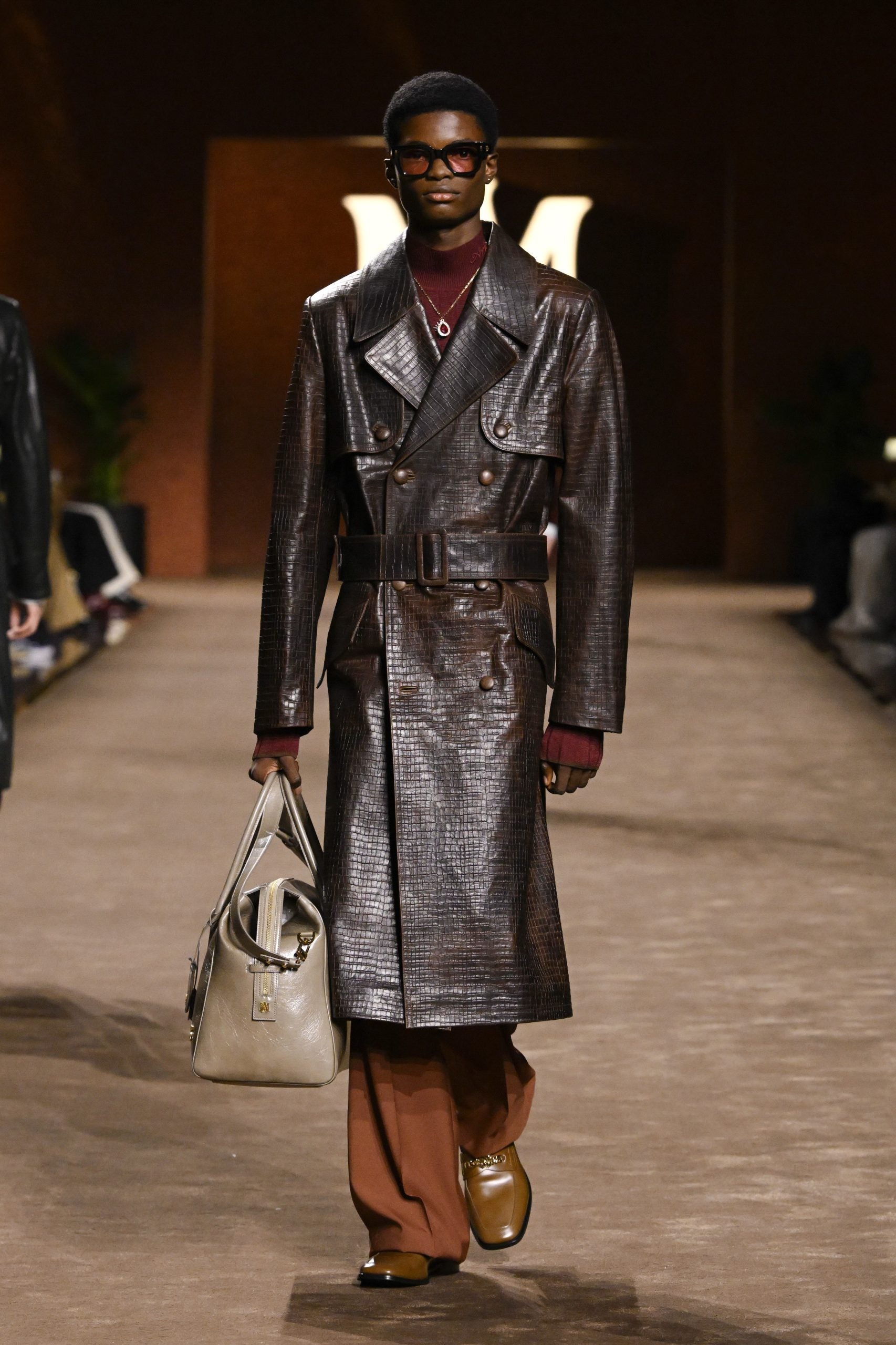
What does it mean for a man to carry a clutch? The cultural historian Benjamin Wild once described it as a “sartorial handicap” to men due to its cost and impracticality. I recall being told, as a boy, to keep my hands open (out of my pockets) in case I needed to use them to help someone. A men’s clutch, therefore, suggests a kind of self-definition and excess so convincing that it goes nearly unnoticed in the hands of Mike Amiri.
Elsewhere in the collection were embellished jewel-tone shirts, zip-up jackets, and cardigans in lustrous fabrications. Leather, belted fielders, and trench coats cinched the models’ waists ever-so-slightly. The collection hearkens back to the ‘70s, a progressive turning point in men’s lives.
The Dior Lads Who Lunch
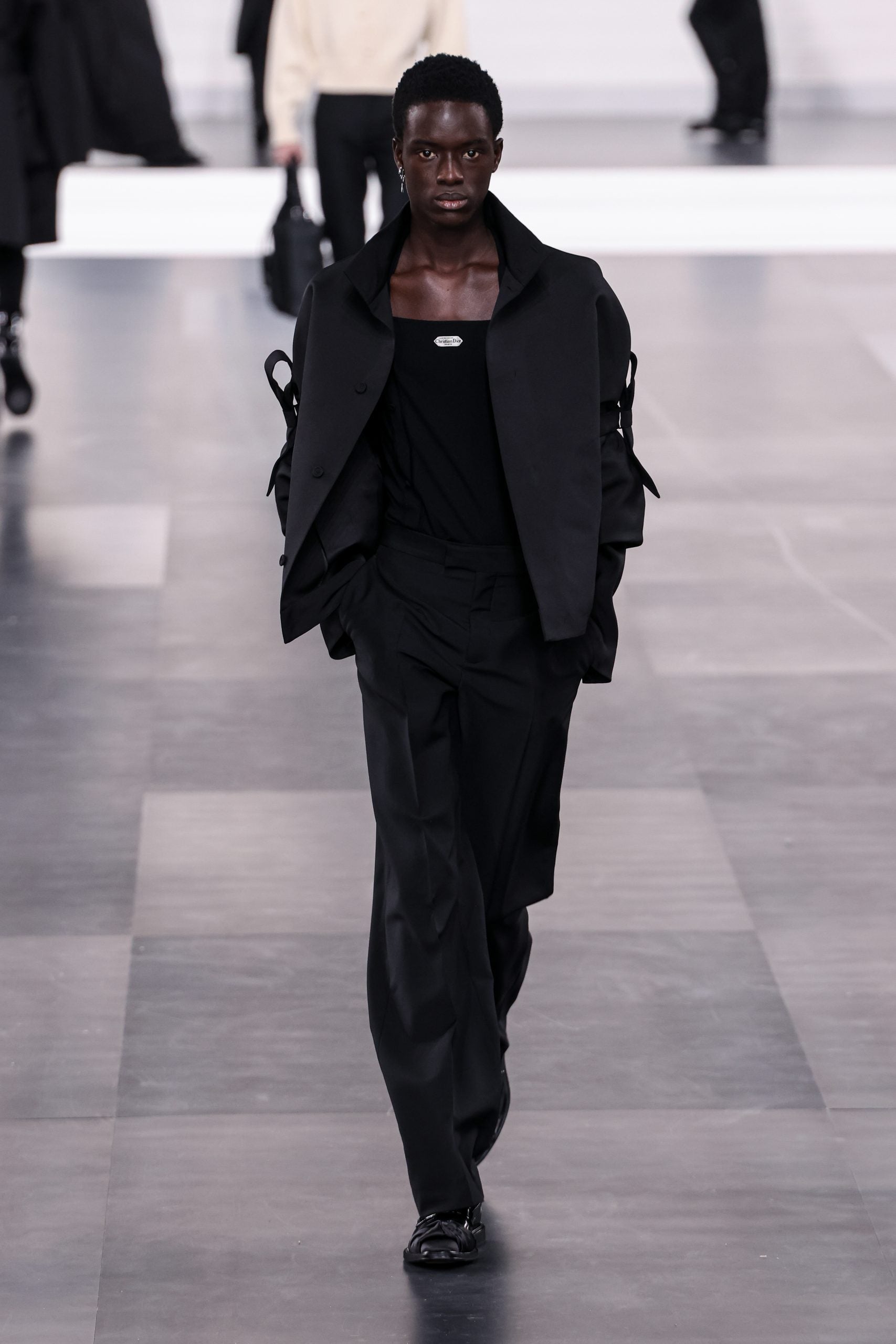
This season, Dior men’s clothing was subtle, which amplified its other statement-making elements. One light heliotrope-hued cardigan sat just below the collarbone, exposing it. And some round-shouldered overcoats without fastenings read like robes, revealing more of the chest.
Notably, there were two space-appropriate blouses with square necklines and folded centers. Collarless jackets, which are hard to come by in stores, were a refreshing from the usual. Most ceremonious was a ruched-and-bowed sleeved jacket in buff-pink. As for the pants, the best of them made roomy ones look elegant and still edgy.
Taking Up Space, Cholo Style At Willy Chavarria
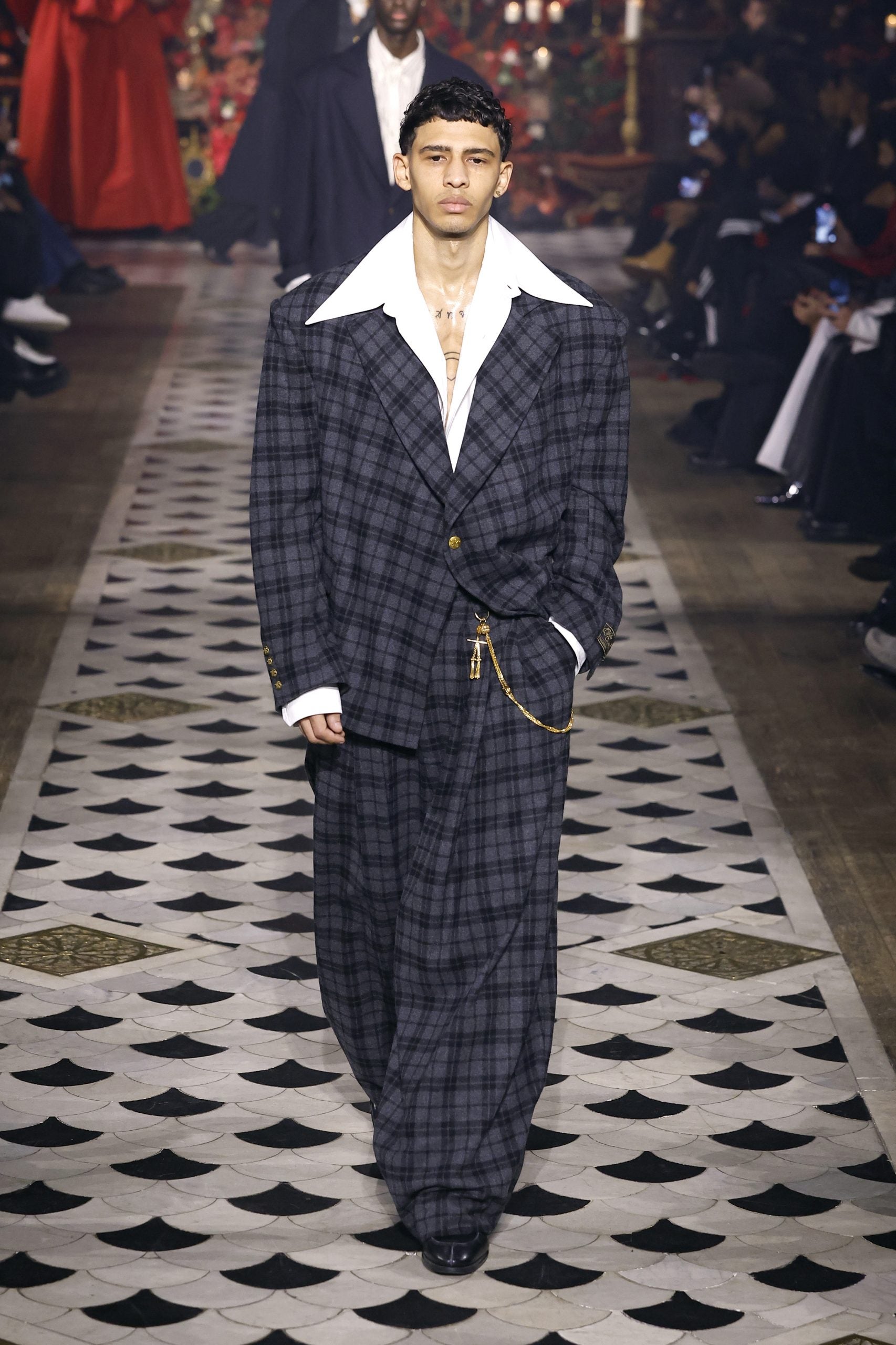
If a runway show is a theatrical spectacle where the designer functions as director and costumer, the models are its characters. But it’s more complicated than that in the commercial art of fashion. Who struts up and down the catwalk often reflects who designers want to see in their clothes, their ideal consumer. And those who endeavor to broaden that spectrum are usually the most engaging. Such is the case for New York’s Willy Chavarria, a Chicano designer who includes Latinx models in his shows. His vision is as expansive as his clothes; their Cholo culture underpinnings are as pointed as the messages they project to threatening political forces. All this made for a stylishly necessary collection—plus a special Jerry Lorenzo appearance.
Better Sweaters At Bluemarble
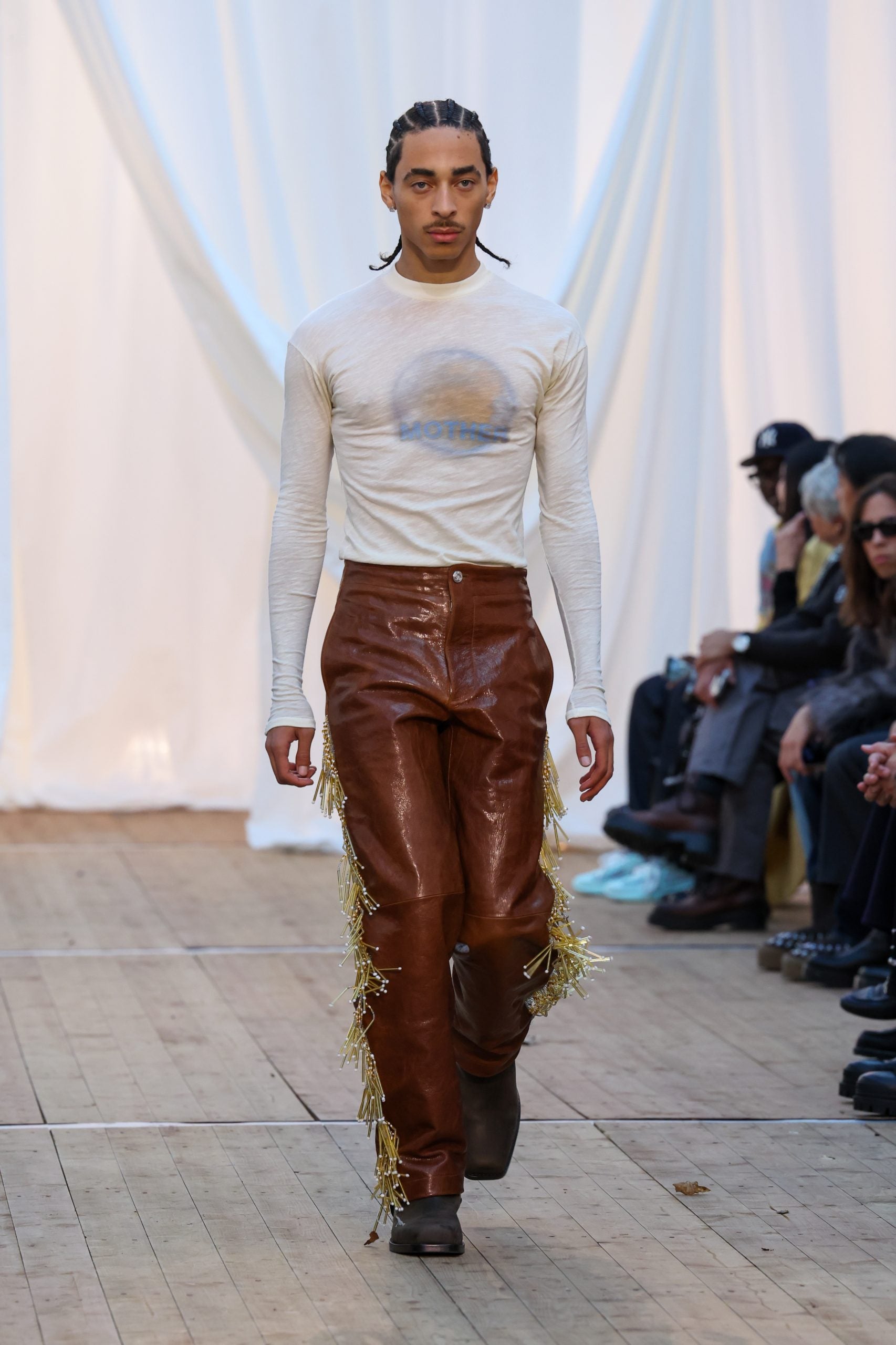
You see someone’s trousers or sweatpants tucked into their boots and instantly think of Princess Diana. She’s credited with popularizing the style, and for good reason: she made it look cool and transgressive. A few models in Anthony Alvarez’s Bluemarble had casual pants flowing over their boots, worn with oversized button-ups and tees with text on them. Some boots were in brown or red suede, others in black leather.
The studs, rich colors, and motifs on the outerwear were striking accents to the collection. Artfully folded over-the-shoulder sweaters proposed that we find more creative ways to tie them (of which there are many). And leafy slippers and non-Western influences provided cultural richness, reminding us that fashion is always more interesting when it looks outward.
Clothes For The Archive At Wales Bonner
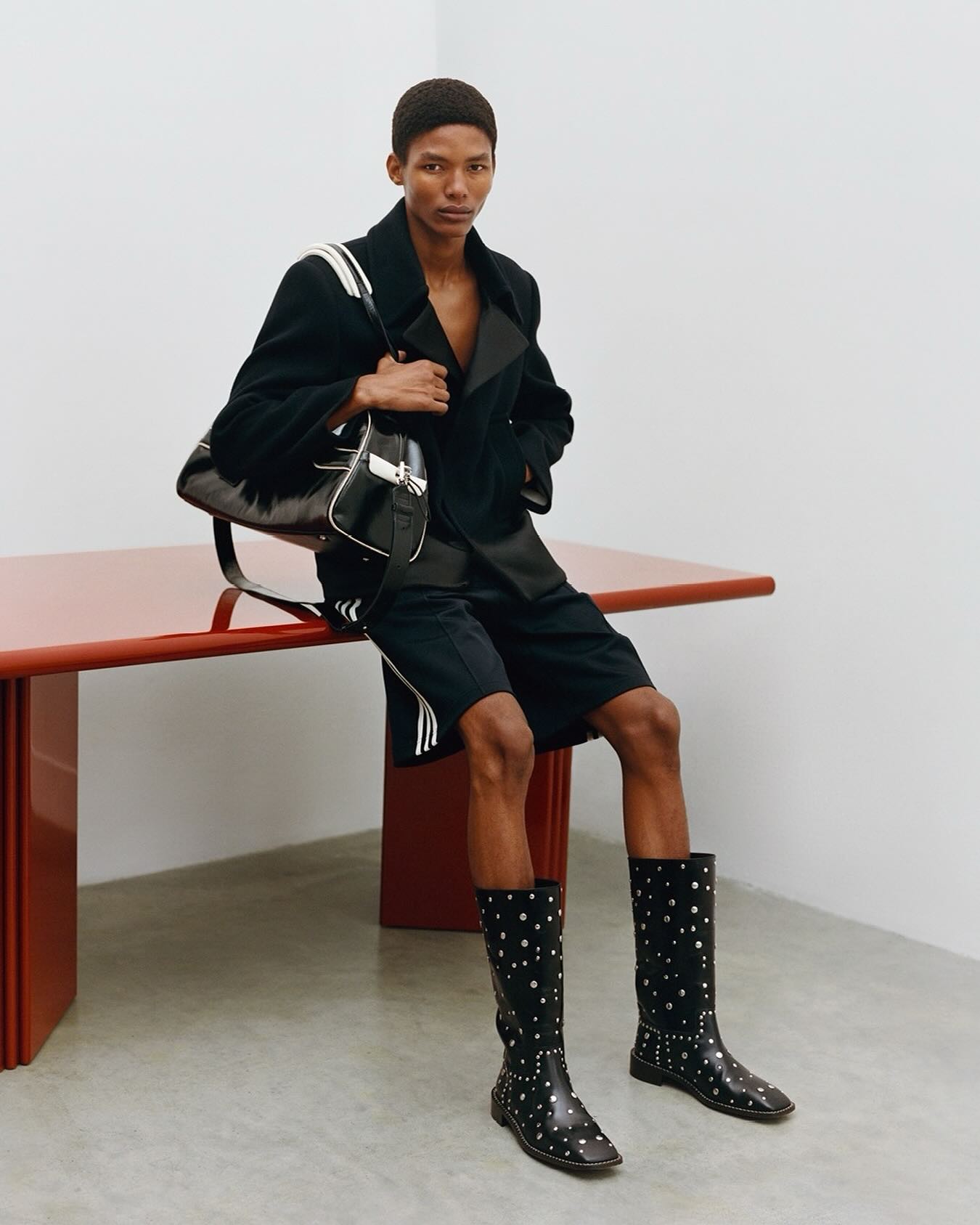
Grace Wales Bonner’s clothes are collectables. One buys her products and has the makings of an archive. Season after season, her decision to make such singular and gorgeous use of the Black cultural reservoir remains impressive, never stale, but always Grace. British heritage has always been part of her visual lexicon. Blended with stark references to Black power and civil rights, publishing, and imagery, Wales Bonner again shows she is the kind of artist James Baldwin once described as an “emotional or spiritual historian.”







